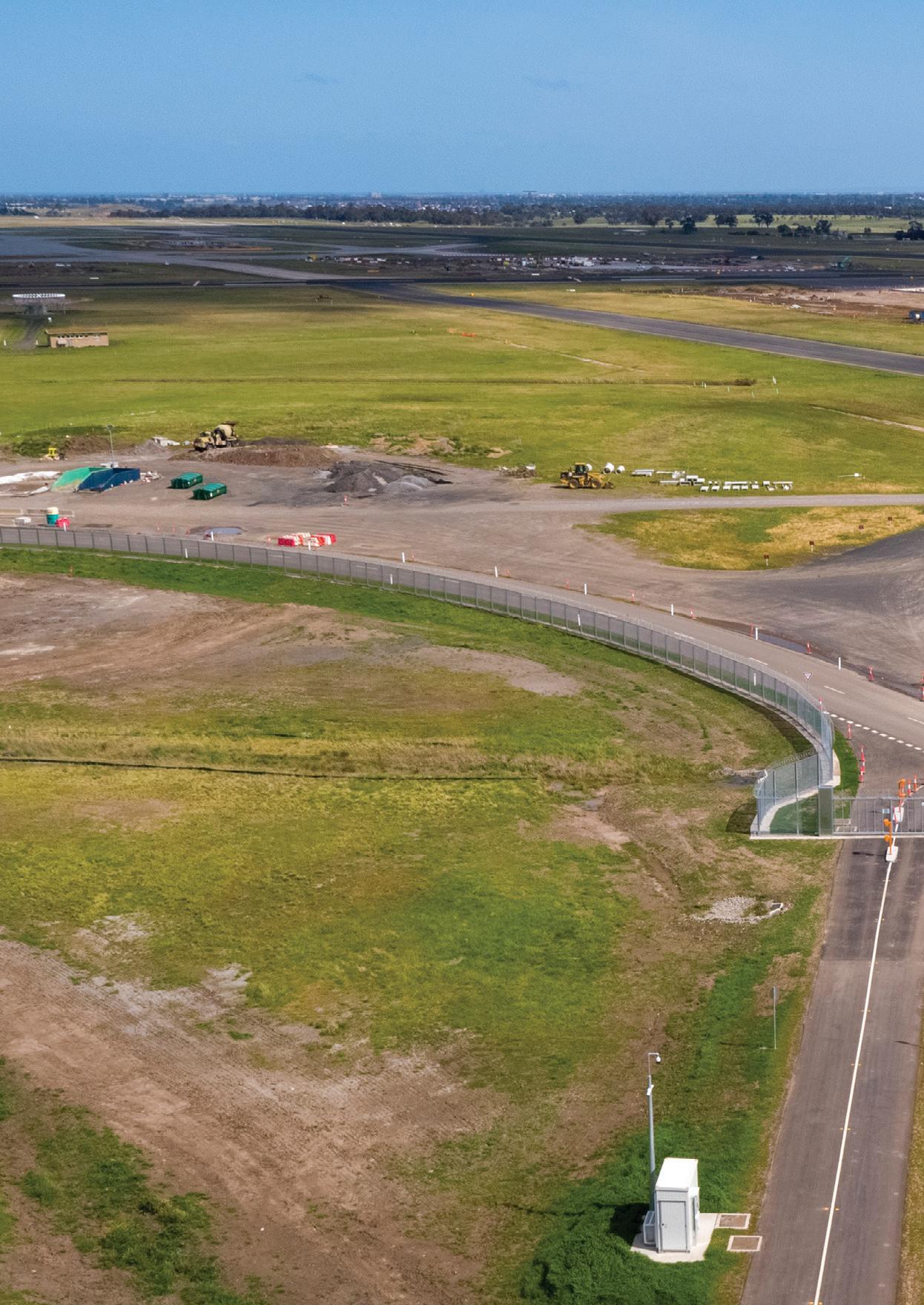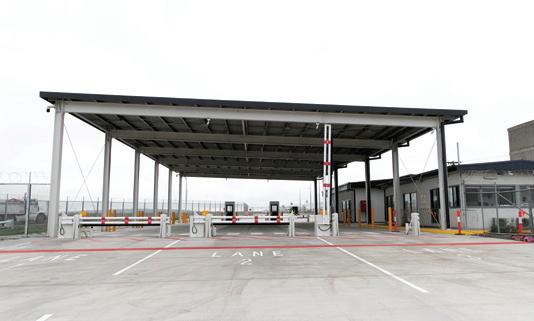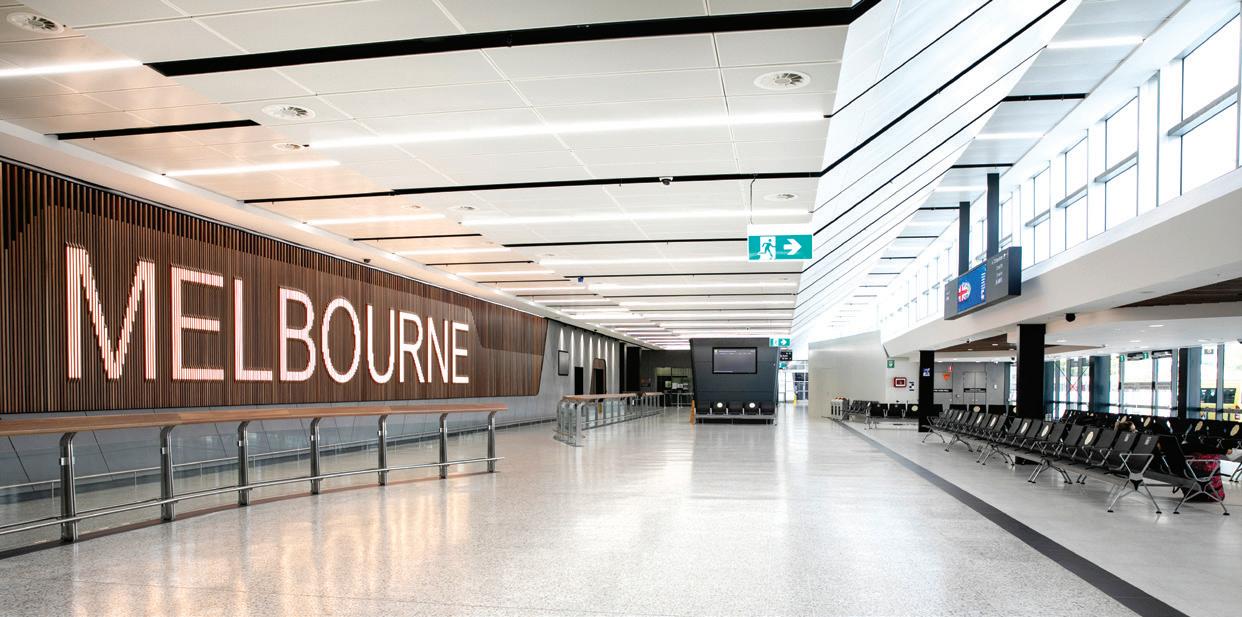
5 minute read
MELBOURNE AIRPORT’S CONSTRUCTION BLITZ
MELBOURNE AIRPORT’S
CONSTRUCTION BLITZ
Advertisement

While the impacts of COVID-19 hit Australia’s aviation industry especially hard, Melbourne Airport has used this time to complete 64 construction projects since March 2020. The projects have added new infrastructure and amenities to the airport to support the overall passenger experience while also improving sustainability.
Melbourne Airport Chief of Infrastructure, Simon Gandy, said that despite COVID-19’s huge impact on travel, the airport had to remain open, so it focused its resources on a select group of projects that would future-proof operations.
“We took the opportunity of continuing some of the more intrusive construction works while the airport was quiet to be ready to welcome our airline customers and guests as they return,” Mr Gandy said.
“Having paused a number of our larger capacity projects, and with a significantly reduced capital program, we focused our resources on the projects that were essential to maintain safe and secure operations to enhance the traveller experience, and also those commercial projects that are assisting our property customers to rebound strongly from COVID.
Our reduced spend of $450 million over this COVID period provides a solid foundation on which to recover our business, and we will continue to manage with a clear focus on ensuring our prioritisation and pace of investment continues in concert with returning demand.”
KEY PROJECTS IN PASSENGER EXPERIENCE International Arrivals Hall
Melbourne Airport completed an $85 million refurbishment of its International Arrivals Hall. The upgrade has created a more spacious and inviting environment ready to welcome more New Zealanders and future international guests.
The new international arrivals area is located in Terminal 2. The Arrivals Hall is often the first impression of Melbourne that visitors have and it is where many reconnect with loved ones. Pre-COVID, Melbourne Airport welcomed around 17,500 international arrivals daily.
The hall includes more seating for those waiting for their loved ones, a larger dwelling area, an improved undercover taxi-wait zone, plus repositioned retail outlets.
This is the largest international terminal investment made by Melbourne Airport in the past five years and the project included the installation of a contemporary indoor façade spanning 420m² – the same size as the wing area of a Boeing 787 Dreamliner.
Mr Gandy said the modernised arrivals space was sure to impress overseas visitors when they return.
“The multi-million-dollar upgrade is spectacular and we’re confident it will leave a great first impression on our international guests, especially all the Kiwis that are about to touch down in Melbourne,” Mr Gandy said.
“The upgraded Arrivals Hall also makes it easier for people to connect with onward domestic flights, providing short connection times for passengers that need to walk between terminals.”

Amenities Upgrade Program
Melbourne Airport is upgrading and adding additional bathroom facilities across the entire terminal precinct, including parents’ rooms and service animal relief areas for those that rely on support animals. At this stage new facilities have been unveiled in Terminal 3, used by Virgin, while the next round of upgrades will take place inside Terminal 1.
KEY PROJECTS IN AVIATION GROWTH Taxiway Zulu
Phase 1 of Taxiway Zulu was completed in 2021. Taxiway Zulu forms part of a broader airfield development program and is the largest single airfield investment for the airport since its opening in 1970.
The new taxiway network replaces aged critical infrastructure, improves aircraft movements in the airport’s northern precinct and will enable the future expansion of the international terminal and support the operations of a future third runway.
Mr Gandy said the Taxiway Zulu project is the largest airfield project the airport has implemented.
“Our Taxiway works ensure we can flow more aircraft without delay to and from our runways, while also providing the opportunity to create more aircraft parking in the future. It’s good news for our returning international airlines who will be looking for greater efficiency in their operations,” Mr Gandy said.

Melbourne Airport has strengthened the capacity of two existing guardhouses and built a third guardhouse to support airfield access. The updated guardhouses include a threelane tiered screening process and explosive trace detection facility which are all part of the screening process required for contractors to enter the airfield.

Airfield Perimeter Fencing
The airport delivered upgrades to security fencing – critical infrastructure that was approaching the end of its useful life. The fencing is not only a protection for the airport asset but also prevents wildlife from burrowing into the estate.
The solar farm is just one chapter in the airport’s strategy to reduce its carbon footprint. Environmentally, Melbourne is committed to growing the airport in a sustainable way to not only benefit the operation but also the airport community. The 12 megawatt solar farm took just over six months to complete and can generate enough power to support all four terminals.

Mr Gandy said the airport will continue to review and invest in energy solutions that deliver more sustainable outcomes and provide resilience to our airport operations.
“We are focused on playing our part to reduce carbon emissions and by adding this 12 megawatt farm we’re able to produce enough renewable energy to power all four passenger terminals,” Mr Gandy said. "We are also looking to incorporate solar into all our new developments on the estate.”

PFAS Water Treatment Facility
The water treatment facility took six months to construct and it uses a series of processes to remove all solids in contaminated PFAS water on the airport estate.
“Our water treatment facility helps us manage PFAS by removing these contaminants which then enables us to reuse water elsewhere on our estate. The facility is 100 per cent powered by solar and we’re really proud to have invested in this environment and sustainability initiative,” Mr Gandy said.











